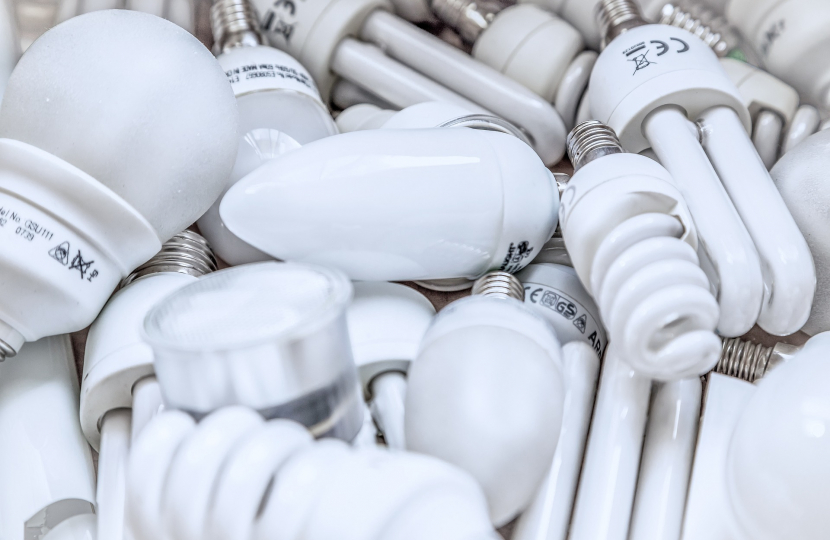
I have put together an information page on my website which sets out some of the support that is available and where you can find out more about eligibility. You can read it here: https://www.gilliankeegan.com/campaigns/cost-living-support You may wish to contact the West Sussex Energy Advice Service who will be able to assist you and of course do let me know if you feel I can help with your personal situation in any way as I would be happy to make enquiries on your behalf or provide advice.
The Government has taken steps to help the lowest-income households through these extraordinary times: reducing the Universal Credit taper rate; increasing the National Living Wage; freezing fuel duty for the twelfth consecutive year; and launching a £500 million Household Support Fund.
Since Ofgem’s confirmation of the first price cap rise, the Government has put forward an ambitious support package to help both lower and middle-income earners with the immediate adjustment. This included a £400 grant for energy bills for all which gave households a monthly discount on their electricity bills between October 2022 to March 2023. Further, a non-repayable £150 cash rebate is being provided for homes in Council Tax bands A-D, equivalent to 80 per cent of all households and £144 million of discretionary funding for local authorities to support those not eligible for the council tax rebate. This means that hard working families will receive £550 with lower income families receiving even more help. The Government will continue providing this year’s cost of living payments and next year it will provide extra one-off payments of £900 for the 8 million households on means-tested benefits.
The Government has introduced an Energy Price Guarantee (EPG) which will give people certainty with their bills. The EPG now applies and will discount the unit cost for gas and electricity use. This guarantee, which includes the temporary suspension of green levies, limits the amount you can be charged per unit of gas or electricity. As you may be aware, the current price guarantee, set at £2,500, has been in place since 1 October and has meant that the Government has subsidised a significant amount of people's energy bills.
As you may be aware, this cap was due to end in April, however the Government is maintaining the EPG at £2,500 for the next three months until June 2023, which will save the average household £160 for this period. This measure will ensure that households are supported through Spring when energy costs are expected to remain high, and until the effects of reduced wholesale prices are expected to feed through into lower household bills later this year. Put together, the Government is subsidising around half of household energy bills.
I understand that Ofgem, recently reviewed the components of the standing charge to see if they could be reduced. Ofgem concluded that while some low consuming users, might benefit from change, some higher consuming users, including vulnerable users, would pay more. Retaining the current methodology would protect users with greater energy needs, such as disabled users and electric heating users.
As I understand, it varies by region due to the different costs to transport power to where we live. In the most recent calculation of the Energy Price Cap, Ofgem increased the distribution cost allowance which is driven mainly by an increase in the industry levy caused by exceptional global wholesale energy prices. For millions of households, the level of the standing charge is protected by the energy price cap rate set by Ofgem.
It is only fair that companies that have made genuine windfall profits as a result of the fallout of the war in Ukraine contribute more to fund the Government’s cost of living support. The Government introduced the Energy Profits Levy from 26 May in response to sharp increases in oil and gas prices over the past year and to help fund cost of living support for UK households. It was levied as a 25 per cent surcharge on UK oil and gas profits, taking the combined headline tax rate for oil and gas companies operating in the UK and on the UK Continental Shelf to 65 per cent.
In the Autumn Statement, the Chancellor confirmed that this will be increased and extended. On 1 January 2023, the Energy Profits Levy rose from 25 to 35 per cent, and will apply through to 31 March 2028. The Chancellor has also introduced a Levy on the profits of electricity generators. Currently, our energy prices are set by the wholesale price of gas. This means that generators of renewable energy, which have far lower production costs, have been making extraordinary windfalls. The 45 per cent levy on these low-carbon producers took effect on 1 January 2023. Taken together, these taxes raise £14 billion this year and £52 billion over the next six years.
More broadly, I know that the Government is working to reduce bills and tackle fuel poverty, for example through the introduction of home energy efficiency measures. The Government’s Energy Company Obligation and the expanded Warm Home Discount schemes will also provide at least £4.7 billion of extra support to low-income and vulnerable households between 2022 and 2026.
The Government has an ambition to reduce the UK’s final energy consumption from buildings and industry by 15 per cent by 2030 against 2021 levels and to upgrade 300,000 homes. New funding worth £6 billion will be made available from 2025 to 2028, in addition to the £6.6 billion provided in this Parliament. To achieve this target, a new Energy Efficiency Taskforce will be charged with delivering energy efficiency across the economy. This comes alongside the Great British Insulation Scheme.
I welcome the publication of the Heat and Buildings Strategy, which signals a step change in improving the energy efficiency of our buildings and how we heat them, while also supporting 175,000 green skilled jobs by 2030 and 240,000 green skilled jobs by 2035 while delivering £6 billion additional GVA by 2030.
The strategy announced the Government's ambition that by 2035, no new gas boilers will be sold. All new heating systems installed in UK homes will either use low-carbon technologies, such as electric heat pumps, or will support new technologies like hydrogen-ready boilers, in line with the natural replacement cycle, and once costs of low carbon alternatives have come down.
Furthermore, the Government will invest over £4 billion of new funding for decarbonising heat and buildings from this year to 2025. This includes a new £450 million three-year Boiler Upgrade Scheme which will see households offered and grants of up to £5,000 for low-carbon heating systems, such as a heat pump, so they cost the same as a gas boiler now. I am encouraged that £1.75 billion will be provided for the Social Housing Decarbonisation Scheme and Home Upgrade Grants, with £1.425 billion for Public Sector Decarbonisation which has the aim of reducing emissions from public sector buildings by 75 per cent by 2037.
There is also an extension to the VAT relief available for the installation of energy saving materials (ESMs) in homes. This will mean wind and water turbines will be added to the list of ESMs and the complex eligibility conditions will be removed. Moreover, this relief is also being increased further by introducing a zero rate on VAT for the installation of ESMs for the next five years. A typical family having roof top solar panels installed will save more than £1,000 in total on installation, and then £300 annually on their energy bills.
In addition, as included in the Clean Growth Strategy, the Government set out its aspiration for as many homes as possible to be Energy Performance Certificate Band C by 2035 where cost effective, affordable and practical, and to reach this standard by 2030 for fuel poor homes. To achieve this, it will need to mobilise up to £65 billion for upgrades, which will put us on a path to net zero, significantly reduce household energy bills, and improve our health and wellbeing. It will also create new opportunities for the energy efficiency sector, currently the largest part of the low carbon and renewable energy economy.
New homes are now expected to emit 31 per cent less CO2 and, in addition, a Future Homes Standard will be introduced in 2025. This will see new build homes future-proofed with low carbon heating and world leading standards of energy efficiency to produce 75-80 per cent less CO2 emissions.




